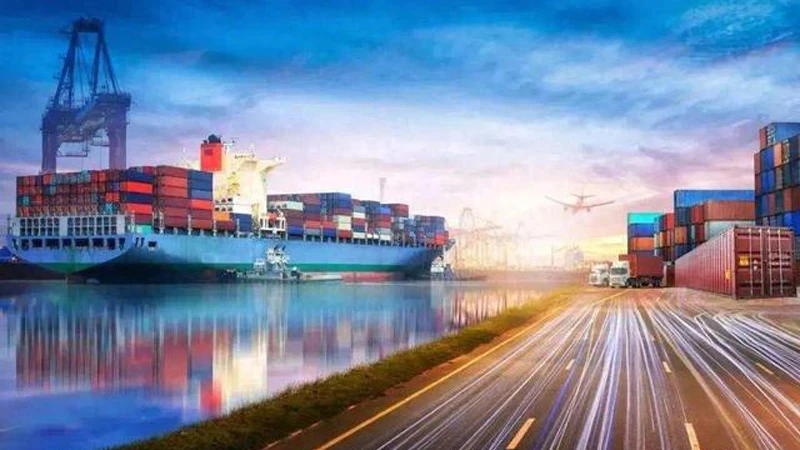As the traditional foreign trade peak season approaches, Chinese exporters are witnessing a shift in market dynamics, with the Middle East emerging as a lucrative new frontier. The change has been particularly significant for Guangdong Zhonghui Green Construction Mobile Housing Technology Co. (广东中辉绿建移动房屋科技有限公司) Chairman Ye Yikai (叶熠铠), who recently travelled to Saudi Arabia to solidify deals, reports a staggering 260% year-on-year increase in regional orders.
Ye's company is not alone. Zhejiang-based exporter Ding Yandong (丁言东) also notes the growing prominence of the Middle East in his company's export strategy, filling a gap left by the declining Southeast Asian market. "This year, the Middle East has quickly risen to account for 40% of our exports, with South America following closely behind," says Ding. This rise is supported by UN International Trade Center data, which projects China's exports to the Middle East to reach $178.6 billion by 2027.

While the Middle East's rapid growth is promising, exporters like Ding recognize that traditional European and U.S. markets still hold substantial importance. According to China's General Administration of Customs, trade with the EU, the U.S., South Korea, and Japan accounted for 34.2% of China's total imports and exports in the first seven months of 2023. Despite economic headwinds, these markets continue to offer significant opportunities for growth.
Ding acknowledges that breaking into the U.S. market has been challenging, but he is determined to expand his footprint there. "We didn't perform well in the U.S. before, but we have to make it work," he says. His strategy includes attending trade shows in the U.S. and leveraging digital tools like cross-border e-commerce to boost market presence.
Meanwhile, in Europe, where purchasing power has noticeably declined in recent years, companies like Shandong Ruitu Laser Technology (山东锐图激光科技) are finding new opportunities. As CEO Ma Tongwei (马同伟) points out, "European customers are now seeking high-quality, cost-effective alternatives to their usual suppliers, making Chinese products more attractive." His company has capitalized on this shift, positioning itself as a reliable supplier for European buyers seeking to reduce costs without sacrificing quality.
Challenges and Opportunities for Chinese Exporters
China's foreign trade has exceeded expectations this year, but the road ahead remains uncertain. Global economic slowdowns, rising geopolitical tensions, and fluctuating sea freight rates have all added complexity to the export landscape. For instance, shipping costs have surged due to the need to reroute around the Red Sea crisis, and the volatility of the yuan against the U.S. dollar has created additional financial pressures for exporters.
Despite these challenges, opportunities abound. The rise of automated production in China is opening new doors in sectors like machinery, where companies are helping European customers reduce labour costs and increase output. "The key is automation," says Ma Tongwei. "Helping clients achieve higher production efficiency with fewer workers is where Chinese manufacturing can really shine."
While global demand has been recovering, external factors like currency fluctuations remain a significant challenge. The yuan's recent appreciation, reversing a long depreciation period, has increased pressure on exporters. The yuan strengthened significantly in August alone, impacting profit margins for companies reliant on favourable exchange rates.
However, as Sun Tianhong (孙天宏), an expert in import-export dispute resolution, points out, businesses can mitigate these risks through effective currency hedging strategies. "Companies need to manage their expectations and take advantage of financial tools like forward contracts and options to safeguard against currency risks," he advises.
Adapting to a New Trade Landscape
As Chinese exporters prepare for the upcoming peak season, they find themselves at a crossroads of opportunity and challenge. Emerging markets like the Middle East and South America offer substantial growth potential. In contrast, traditional markets in Europe and the U.S. continue to provide stable demand, albeit under more competitive conditions.
The global trade landscape is changing, and China's exporters must be agile to navigate the evolving challenges. Whether it's adopting new technologies, entering underserved markets, or managing financial risks, the future success of China's foreign trade depends on adaptability and strategic foresight. As the global economy shifts, those who can embrace the opportunities and challenges of this dynamic environment will be best positioned to thrive.


